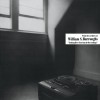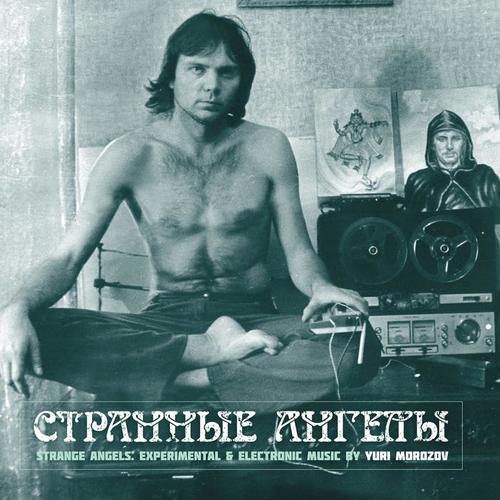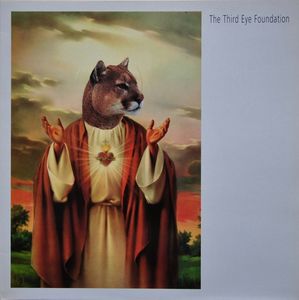 Towards the end of his long and picaresque life, Billy Burroughs had become such an in-demand photographic accessory for the rock star du jour that the astounding body of work that had made him so notable in the first place was starting to slip dangerously into the shadow of his alternative celebrity status.
Towards the end of his long and picaresque life, Billy Burroughs had become such an in-demand photographic accessory for the rock star du jour that the astounding body of work that had made him so notable in the first place was starting to slip dangerously into the shadow of his alternative celebrity status.
In some ways it’s just as well that Burroughs shuffled off his mortal coil in 1997, well before the age of the ‘selfie stick’, otherwise the poor bugger wouldn’t have been able to go anywhere at all – he would have nipped out to the corner store for a tin of cat food and never made it more than a hundred yards down the road before being buried under massed phalanxes of musicians snapping away with their iPhones as if he was a human version of the Brooklyn Bridge. Were he still with us, newly-married Chinese couples would probably now be jumping out of white stretch limos to have their wedding photos taken beside him.
Thankfully though, nearly 20 years after his death, and with his physical presence starting to recede gently into history, the past year has shown signs of Burroughs’ vast and stunningly multi-faceted legacy emerging once more to take centre stage. Last year, The Photographers Gallery in London mounted a prestigious tripartite show featuring the photographs of three giants of American post-war culture: Andy Warhol, David Lynch and William Burroughs. The exhibition claimed to be the first show anywhere devoted solely to Burroughs’ photographic work and, despite the seriously heavyweight duo ranged alongside him, it was clearly Burroughs’ photos that really stole the show.A year later sees the re-release of Nothing Here Now But the Recordings, an album of Burroughs’ remarkable audio work that first appeared in 1981, just after he had moved away from The Bunker (his fortified apartment on New York’s Bowery) and into a quiet two-bedroom cottage in Lawrence, Kansas (built in 1929 from a Sears & Roebuck house-building kit) in order to seek a more bucolic life away from the frenzy of the Big Apple. As he told a reporter at the time: “The thing I like about Kansas is that it’s not nearly as violent, and it’s a helluva lot cheaper. And I can get out in the country and fish and shoot and whatnot.” Over and above the clear and present danger to the wildlife of the Sunflower State, Burroughs’ no-doubt idiosyncratic idea of “whatnot” surely turns the prospect of a rustic day out in the countryside into a dizzying journey into the dark heart of Interzone.
Originally, Nothing Here Now But The Recordings had appeared as the final release on Throbbing Gristle’s Industrial Records label, soon to terminate its mission with the imminent cessation of the band. And it was thanks to TG mainsprings Genesis P-Orridge and Peter ‘Sleazy’ Christopherson that there was anything to release at all. Having first met Burroughs in his Duke Street residence in 1973i (a slightly snicker-some contemporary photo shows a hairy and bearded Gen looking more like the Bhagwan Shree Rajneesh than a wrecker of civilisation), P-Orridge maintained a more fruitful and refreshingly two-way relationship with Burroughs than most of the musicians who merely stopped by for a quick snap with which to up their avant-cool credentials.Together with Christopherson, P-Orridge spent a considerable amount of time visiting The Bunker throughout 1980 in order to work with Burroughs and his executor James Grauerholz on the mammoth task of collating Burroughs’ previously unheard experimental sound recording work. Although there had been previously-issued recordings of Burroughs – Paris’ English Bookshop had put out Call Me Burroughs as far back as 1965 – none of his innovative tape cut-ups had seen the light of day up to that point.
P-Orridge later commented:I thought of doing the LP in 1973, it was about the first thing I suggested to him when I met him. And I wrote him letters suggesting it again and again and again for the following eight years, and suddenly one day James Grauerholz wrote back and said ‘Okay.’ Just when I thought he was never going to do it!
Given that the original source tapes were already in a badly decayed condition by the turn of the 1980s, the transfer work did not come a day too soon:
He just agreed to us taking the tapes away, fifteen hours of them, and editing them down to an LP. It’s a good job we got them, ’cause they were recorded over twenty years ago and the oxide was actually crumbling off the tapes as we held them.
The great work continued on into early 1981, after Burroughs’ move to Kansas, with the full fruits of the collective labour finally appearing in May of that year. Now, to mark last year’s centennial of his birth, this long out of print album has been reissued with the full blessing of the Burroughs estate, giving, as with The Photographers Gallery exhibition, a chance to explore fully yet another thrilling aspect of Burroughs prodigious and inspirational output.
And what an exploration it is. From short 30-second bursts of Burroughs’ own voice rattling like cold wind through the trees to longer-form pieces such as “We See The Future Through the Binoculars of the Future”, the tapes present a fractured lens of wordplay, found sound, bursts of noise and static, ambient recording and dialogue. Of course, in the half century since they were recorded, the ideas that they explored have permeated so deep into the discourse of the underground, an underground which has became better known to many more and, indeed, some would argue turned almost entirely overground. There’s no point pretending that the ideas here, so revolutionary in their time, can maintain their shock of the new to generations 50 years later weaned on the work of those who later popularised them more widely. Hell, even Kate Middleton owns a copy of Unknown Pleasures these days. And Home Secretary Theresa May even chose “Hamburger Lady” as one of her Desert Island Discs recently (allegedly; Ed.)Yet, despite the years, there remains a glorious lo-fi inventiveness about Burroughs’ experiments with his simple Revox equipment. Whatever the medium, Burroughs’ spirit of irrational inquiry leaps out at you, and these are still fertile fields through which to walk and seek inspiration. Plenty of the very greatest have been here before to do just that, so we have to be truly thankful to Dais Records for making these little jagged gems available once more.
Sadly, in all likelihood, few will probably take it as far as Burroughs, who notably used his photos and tape cut-ups to mount a psycho-acoustic-magical attack on the Moka Coffee Bar, which he held responsible for an “outrageous and unprovoked discourtesy and poisonous cheesecake”. It was Burroughs’ firm belief that once a situation had been recorded and played back at source on the street, the person recording has created a new reality and that continued exposure to such an attack would induce “accidents, fires and removals”. And so, in August of 1972, Burroughs attacked the Moka, standing outside every day taking photos and making recordings by tape, and returning the next day to play the previous days recordings: “[He] was convinced he was winning. ‘They are seething in there,’ he said. ‘I have them and they know it.’” By October, the Moka – the first coffee bar in Britain, and often credited for kick-starting the UK’s youth culture – had closed for good.We’ve an election coming up in a few months time. Time to get busy…
-David Solomons-
i When visiting London from the north, the young Gen would stay at the studio space of Robin Klassnick in Martello Street, Hackney (later TG’s legendary Death Factory recording space). Amusingly, arriving for a visit one day, Klassnick told him: “Some stupid bloke rang up asking for you, pretending to be William Burroughs — so I told him to piss off and put the phone down on him!”



